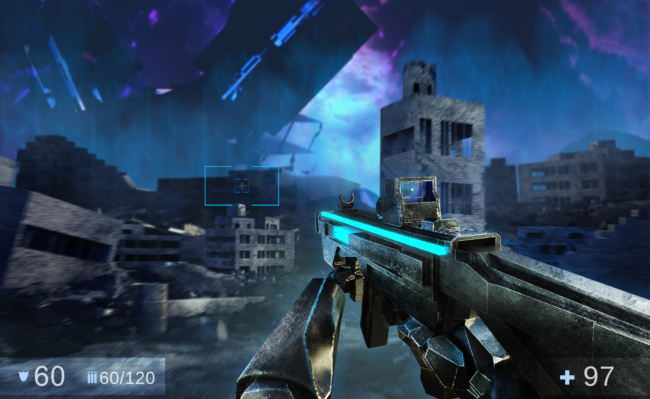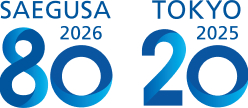Is the Strategy of Placing Part of a System Offshore Doomed? – An Extraterritorial Reach of a System Patent Acknowledged for the First Time in Japan
2023.06

©breakermaximus/iStock
On May 26, 2023, similar to the BlackBerry patent suit before the CAFC in the US (NTR, Inc. v. Research in Motion, Ltd.), the IP High Court (IPHC), in its grand-panel decision, acknowledged for the first time in Japan an extraterritorial reach of a claim directed to a computer system composed of a user terminal and a server, even though these were respectively located inside Japan and outside Japan. The most important practical implications of this decision are as follows.
(i) Although the IPHC already acknowledged, regarding internet-related inventions, an extraterritorial reach of a claim directed to a “program” for the first time in 2022 (actually in another patent suit between the same parties as in this case), this is the first time that the court has acknowledged an extraterritorial reach of a “system” claim.
(ii) On the face of it, you may think that the IPHC simply follows the CAFC while applying a “control and beneficial use” test in the same manner as in the BlackBerry case. However, if you take a closer look at the decision, you will note some differences between the approaches of the two courts.
Recap of Events Before Decision
This case is a part of an intense IP battle over patents as well as trademarks between Dwango Co., Ltd. and FC2, Inc.
“Doom” Messiah
Dwango (an acronym for Dial-up Wide Area Network Gaming Operation) was originally the name of a service offered by Interactive Visual Systems (IVS), a US company, from 1994. The service provides a better online gaming connection for users playing first-person shooters (FPS) such as “Doom,” the most popular FPS at the time. In the late 1990s, a joint venture called Dwango was founded in Japan by IVS and the Japanese cyberspace guru Nobuo Kawakami in order to provide the above services for online gamers in Japan. Dwango, while transforming the nature of its services from time to time, ultimately became a subsidiary of Kadokawa, one of the largest entertainment companies in Japan.
In 2007, around one year after the birth of YouTube, Dwango released Nico Nico Douga (“Smiling Video,” in English), their own video sharing platform, by which users can communicate with each other via short text messages overlaid on the video feeds. A short text entered by a user scrolls over the video frame from right to left for exactly four seconds (in the same manner as the scrolling “news ticker” utilized by CNN Headline News etc. to display breaking news stories or other important information), and other users can add comments later in the same manner. When a text added later is entered while an earlier text is still displayed on the video, and the later-added text is sufficiently longer than the earlier text, the later-added text is displayed at a vertical position somewhat different from that of the earlier text. The reason therefor is that otherwise, the later-added text would collide with the earlier text (because a longer text needs to scroll faster than a shorter one, in order to disappear at the left end in four seconds). Such Nico Nico Douga videos are sometimes covered by hundreds of lines of text, particularly videos that “blow up” in popularity for some reason, or videos that cover historical events (e.g., the pop singer Michael Jackson’s death in 2009). At some point, perhaps due to this unique function, Nico Nico Douga became one of the most successful video sharing platform in Japan, gaining fast popularity among tech geeks and the like.
Army of Offshore Servers
FC2, the US-based company, was founded by Japanese national Riyou Takahashi (who is currently wanted internationally on suspicion of non-IP related crimes) in 1999.
In 2007, FC2 released their own video sharing platform, FC2 Douga (“FC2 Video,” in English). In 2011, FC2 Douga released a text communication feature similar to that of Nico Nico Douga. FC2 placed its computer servers only in the US; upon request from a user terminal in Japan, these servers send back files that enable the user terminal to display comments in a manner similar to that of Nico Nico Douga.
Outbreak
In 2016, Dwango filed a lawsuit against FC2, alleging infringement of their patent directed to a program relating to the above comment display function. This was followed by another lawsuit (this case) concerning their patent directed to a computer system also relating to the above function.
In the former case, at issue was whether a transmission of a program covered by the patent in suit from outside Japan territory would constitute infringement or not. After a long discussion, the IPHC acknowledged an extraterritorial reach of a claim directed to a “program” for the first time in Japan, while applying a test similar to the “control and beneficial use” test applied in the CAFC’s BlackBerry case. Specifically, even though a part of such transmission from FC2’s server in the US was not implemented within Japan territory, the IPHC stated that such a transmission is regarded as an “offer” of a program in suit, if this transmission can be evaluated, as a whole, as being implemented within Japan territory in a substantial sense. Although this is obviously a positive development for patent owners, some practitioners say that the criteria given in this decision is so vague that the study of future decisions is necessary to clarify the IPHC’s thinking in this regard. What is more, before the decision of the latter case was announced, it was unclear whether the same decision as above would also be applicable to a “system” claim. Some practitioners expected the threshold to show infringement of a system patent to be higher, as it is quite clear-cut whether a claimed element (e.g., a server) is placed inside Japan or not.
Summary of the Decision
To date, only a summary of the decision has been published. What we have learned from this summary is as follows.
“Production” of a Network System
According to the Japan Patent Act, the patentee has exclusive rights to work the patented invention; and in the case of a claim directed to a network system wherein a server and a terminal are connected via a network such as the internet, and thereby function as a whole, the term “work” in this context includes the act of producing it. According to the IPHC, when the server and the terminal are connected via a network and thereby become closely coordinated and functional as a whole as required by the claim, the system in question is considered to be “produced.”
Conditions for Extraterritorial Reach
Even if the server is placed outside Japan territory, such a network system patent is still enforceable when the “production” of the claimed system, in the sense as discussed above, can be regarded as being implemented within Japan territory in a substantial sense. This should be determined by considering at least the following aspects comprehensively:
i) the details of such a “production”;
ii) the function and role of the component of the system located in Japan;
iii) the place where the technical effect of the patent in suit is achieved using the system; and
iv) the impact on the economic interest of the patentee induced by the use of the system.
The IPHC’s findings on the above items i) to iv) are as follows:
i) In view of the fact that the system in suit is considered to become fully operational (i.e., “produced”) when the user terminal in Japan receives the files sent from the server in the US, this sending/receiving can be regarded as being implemented within Japan territory.
ii) The user terminal of the system in suit has functions that are considered to be necessary for the main function of the patent invention (namely, to display multiple comments that do not collide with each other).
iii) The technical effect of the patent invention (i.e., making communication between persons watching the same video more entertaining) is achieved in Japan territory by using the system in suit.
iv) The use of the system in suit has an impact on the economic benefit of the patentee, which obtained by using their own system covered by the patent within Japan territory.
In view of the above findings, the court acknowledged infringement of the patent, since it can be regarded that the system in question is “produced” within Japan territory.
Who “Produced” the System?
In light of the fact that FC2 is the one who placed and managed the servers, and that these servers send files to the user terminal automatically in accordance with the program uploaded therein by FC2, without any further actions by the user, the IPHC determined that FC2 is the one who “produced” the system in suit, and is thus liable for infringement.
Reaction from Industries and Practitioners
This decision is certainly a positive development for IP owners. As Dwango officially stated, “the IPHC’s decision, which indicates that Japan’s patent rights should be properly protected, is a landmark decision.” This is also supported by the fact that many amicus curiae briefs on the side of the patentee were submitted by various industry groups.
It appears that the same is true for most practitioners in Japan, including the Japan Patent Attorneys Association (JPAA) and the International Association for the Protection of Industrial Property (AIPPI), who both submitted amicus curiae briefs on the side of the patentee for this case.
It further appears that the stand taken by the IPHC is basically in line with settled positions in other jurisdictions, such as the CAFC in the US. However, the IPHC may have considered additional aspects to come to their conclusion.
Claim Drafting Advice
In the case when technical features of an invention in question distinguishing it from the prior art mainly lie on the side of a server, rather than on the side of a terminal, a “system” claim is useful at the patent prosecution stage, since such distinguishing features can be relied upon in the course of arguing the novelty and inventive step of the invention. However, at the enforcement stage, before the IPHC’s decision, it was unclear whether such a system patent would be enforceable when the server is placed outside Japan territory. When drafting patent applications, applicants should leverage this decision by utilizing such system claims.


